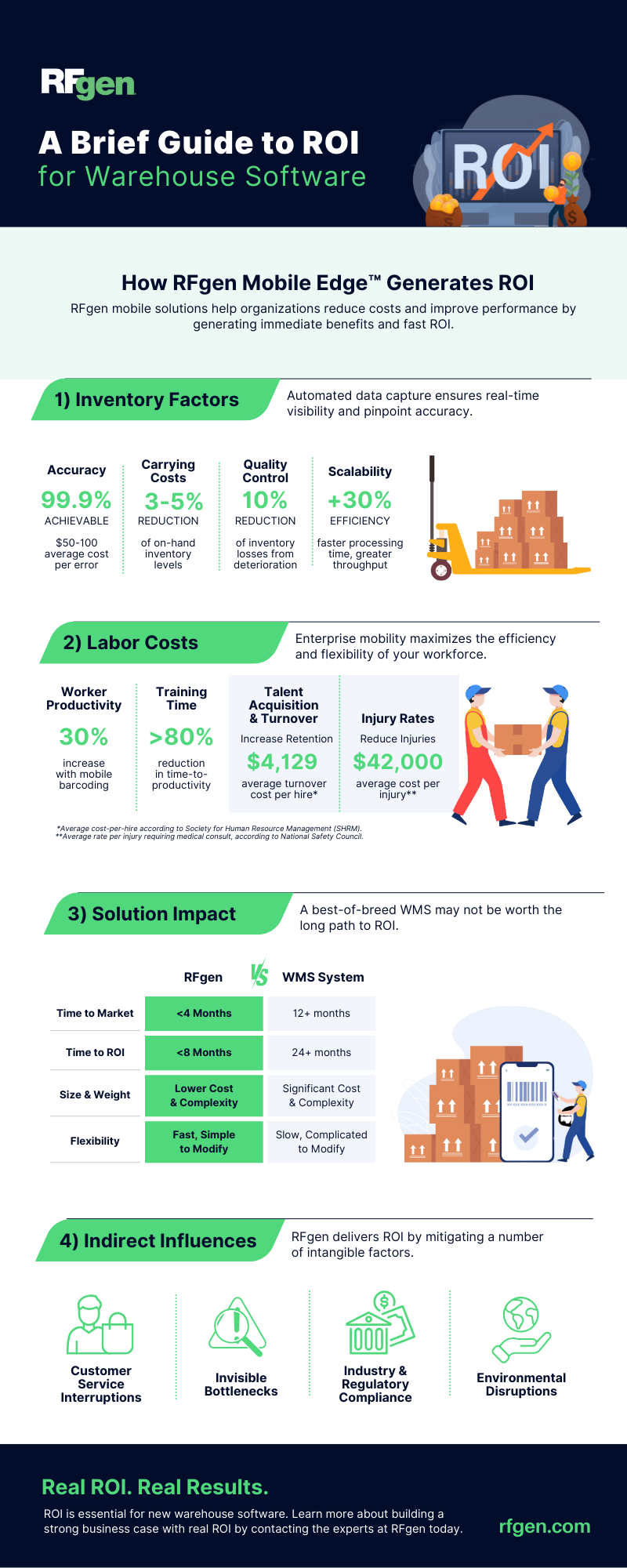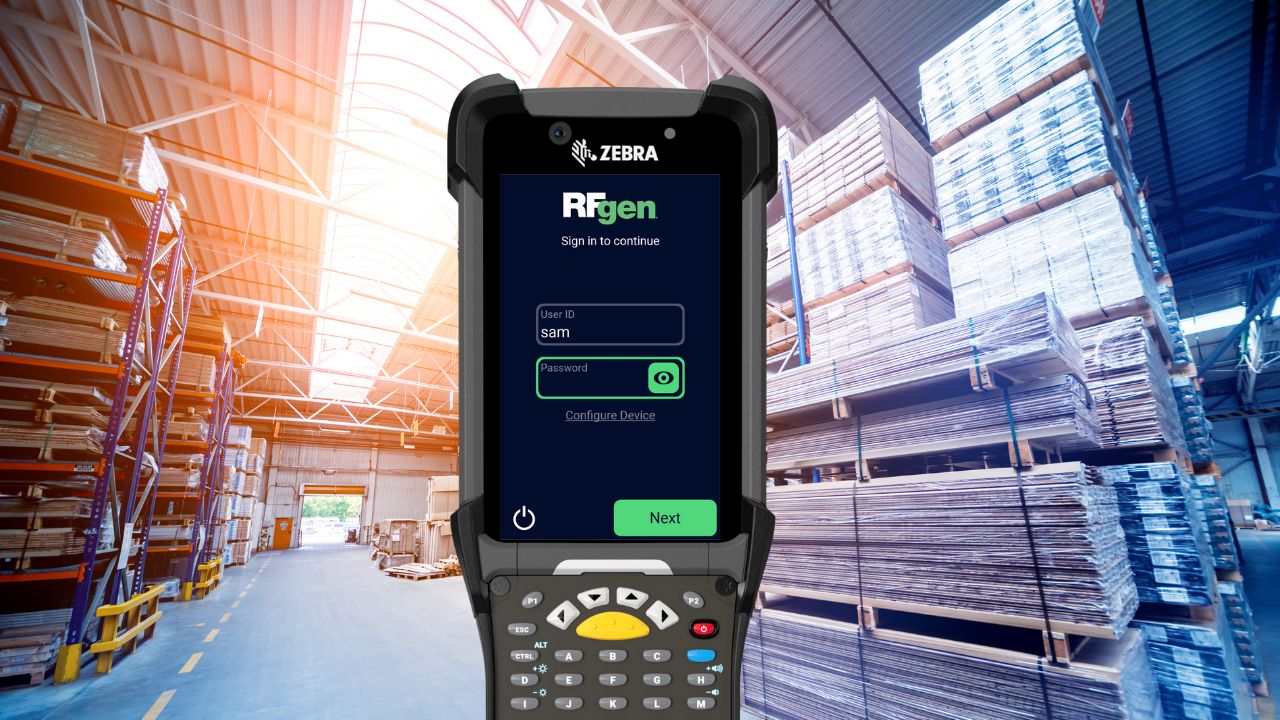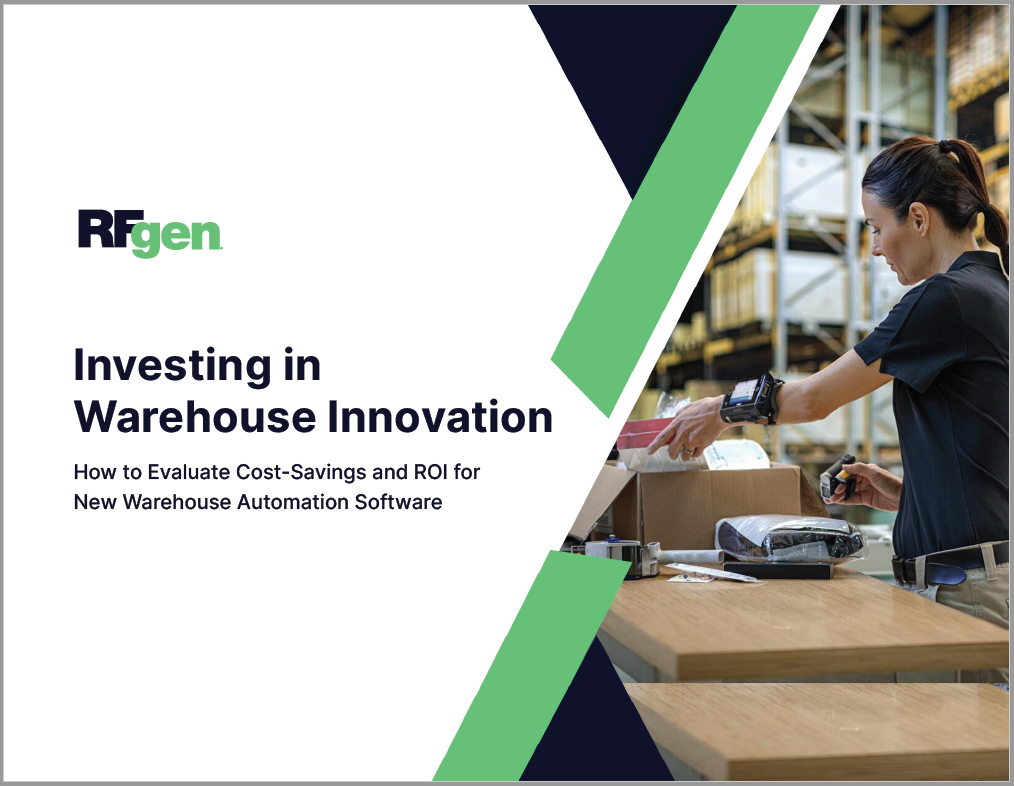How Advanced Inventory Control Unlocks Business Growth
- Digital Transformation
- Inventory/Warehouse

For any business that handles materials or fixed assets, inventory control is central to operational efficiency and customer satisfaction. To manage inventory efficiently requires technology. However, efficiency and optimization only come from advanced inventory control software.
These inventory solutions help businesses simplify and automate complex supply chain processes more effectively than ever before.
For enterprises that leverage an Enterprise Resource Planning (ERP) system, advanced inventory management technologies are essential to streamline inventory processes. Only then can you unlock new avenues for growth and competitiveness.
Let’s take a look at how advanced inventory control software can catalyze business efficiency and expansion.

Infographic: What’s Trending in Inventory Technology
GO NOW »The Role of Inventory Control in Business Efficiency
Inventory control focuses on maintaining optimal stock levels to meet consumer demand without incurring unnecessary costs. It’s a delicate balancing act.
The success of a company’s inventory control directly impacts its ability to efficiently manage resources, ensure timely product availability, and maintain customer satisfaction.
Aided by inventory management software features, your organization can more effectively:
- Prevent overstocking or stockouts
- Optimize inventory turnover rates
- Reduce holding costs and overheard
- Increase volume and throughput
- Mitigate labor shortfalls
- Minimize waste from inefficiency
- Improve cash flow
All of these components are vital for financial health and growth.

Inventory Problems We Solve
READ MORE »Additionally, inventory control plays a role in streamlining supply chain operations and enhancing product quality management.
In an era where consumer expectations are continually evolving, the agility afforded by effective inventory management is invaluable for staying competitive and responsive to market demands. Enhancing inventory control with software automation can drive further optimization across the board.
Features of Advanced Inventory Control Software
To compete in today’s fast-moving markets, larger companies are finding that basic inventory software doesn’t meet their needs in terms of functionality or automation. They turn to advanced inventory control software.
Advanced inventory control software comes equipped with a range of features designed to optimize inventory management, improve efficiency, support short-handed warehouse teams, and boost strategic decision-making.
Advanced inventory software takes many forms, most of them mobile. In recent years, mobile inventory management has become the de facto standard in the supply chain.

The Complete Guide to Mobile Inventory Management Systems
LEARN MORE »The top 10 most impactful features of advanced inventory control software include:
- Real-Time Inventory Tracking: Enables businesses to monitor stock levels across multiple locations instantly, ensuring accurate inventory data is always accessible for decision-making.
- Demand Forecasting: Utilizes historical sales data and trend analysis to predict future demand, allowing companies to adjust inventory levels proactively to meet anticipated needs.
- Automated Reordering: Automatically generates purchase orders for replenishing stock based on predefined minimum and maximum thresholds, reducing the risk of stockouts and overstocking.
- Barcode Scanning: Streamlines the inventory management process by allowing for quick and accurate item tracking, reducing errors associated with manual data entry.
- Multi-Location Management: Offers the ability to manage inventory across several warehouses or factory locations, ensuring optimal stock distribution and availability.
- Batch and Serial Number Tracking: Facilitates the tracking of products by batches or serial numbers, which is crucial for warranty management, recalls, and quality control.
- Cloud-Based Accessibility: Provides access to inventory data from anywhere at any time, enhancing flexibility for multiple locations connected to a cloud-based ERP system.
- Integration Capabilities: Seamlessly connects with other business systems like ERP, warehouse, and manufacturing software, providing a unified view of business operations, and improving operational visibility.
- Advanced Reporting and Analytics: Offers visual report dashboards and KPI analytics on inventory performance, helping businesses identify trends, make informed decisions, and optimize inventory strategies.
- Offline Inventory Control: “Allows facilities to operate with continuous availability, including Wi-Fi, cellular, or disconnection from the ERP system.
Together, these features provide businesses with a powerful toolset to efficiently manage warehouse inventory.

Best Strategies for Effective Offline Inventory Control
READ NOW »Benefits of Implementing Advanced Inventory Control Software
The reason so many businesses implement advanced inventory control software is because of its transformative benefits. Leveraging advanced inventory software enables your company to significantly enhance operational efficiency while cutting overhead costs.
Improved efficiency delivers benefits downstream, enhancing customer satisfaction as well.
Advanced inventory solutions like mobile barcoding use highly optimized automation to eliminate unnecessary tasks and conserve resources. Instant data updates with the ERP system ensure that all data is accurate and up-to-the-second accurate all the time.
This lends companies greater agility and the ability to pivot in the face of fluctuating demand.
The major benefits of advanced inventory control software include:
- Enhanced Warehouse Efficiency: Directed picking and putaway, automated reordering, barcode scanning, and integration with other business systems streamline operations, reducing manual labor and the likelihood of human error.
- Cost Savings: Optimized inventory levels reduce the need for excessive stock and storage space, and wasted effort or manual processes, minimizing costs associated with the under-utilization of resources.
- Informed Decision-Making: Access to accurate and real-time inventory data enables businesses to make strategic decisions swiftly, reducing guesswork and enhancing operational efficiency.
- Improved Customer Satisfaction: Ensuring product availability and timely delivery helps your business meet customer expectations consistently, fostering loyalty and encouraging repeat business.
- Scalability and Flexibility: Advanced real-time software should be easily extensible, allowing adopters to configure their solution to complement a change in inventory strategy.

Your Guide to Tracking Your Inventory Anytime, All The Time
DOWNLOAD NOW »Challenges and Considerations in Adoption
While adopting advanced inventory control software can significantly benefit your business, the transition isn’t without its challenges. For instance, implementing a mobile inventory solution at the enterprise level may require alignment among multiple stakeholders in multiple departments that form the buying committee.
In addition, certain obstacles may arise during the implementation itself. Part of planning a successful implementation strategy involves accounting for the following expected challenges:
- Cost Considerations: The initial expense of software acquisition and customization must be weighed against long-term benefits in the form of Return On Investment (ROI). Work with potential vendors to build a business case that includes a realistic ROI assessment to help sell the project internally.
- Integration Complexities: Seamlessly integrating new software with existing systems can be technically challenging, requiring careful planning and possibly custom solutions. Look for ERP-certified or validated solutions from experienced vendors with a proven history.
- Resistance to Change: Employees accustomed to traditional inventory management methods may resist new technologies, necessitating comprehensive training and change management strategies. Therefore, a mobile solution that’s intuitive is important to break down this resistance.
- Learning Curve: Staff may require time to become proficient with the new system, potentially affecting productivity during the transition period. A mobile system with a modern user interface (UI) can drastically reduce the learning curve by as much as 80%.
It’s important to address these challenges head-on. Stay proactive and informed to anticipate challenges. Have a plan in place.
Your plan should also include ways to minimize disruption during the transition and sufficient processes to prevent project failure due to lack of user adoption.

Investing Warehouse Innovation: Calculate Technology ROI
DOWNLOAD GUIDE »A Success Story of a Business Using Advanced Inventory Control Software
Case Study: The Gill Corporation
The Gill Corporation, a leading manufacturer in aerospace and defense, was still managing inventory with paper processes. Manual work led to unacceptable errors and inefficiency. To overcome these challenges, Gill Corporation adopted RFgen MobileEdge™. This advanced inventory control software helped Gill Corporation digitally transform inventory management with a future-proof technology platform.

Gill Corp Gains Real-Time Visibility with RFgen
READ THE FULL STORY »Unlocking Business Growth with Advanced Mobile Software
Adopting inventory control best practices isn’t enough for efficient warehouse operations. Businesses like yours must rely on advanced inventory control software to ensure optimal stocking, productivity, visibility, and cost control.
Of the many advanced inventory software on the market, perhaps no technology provides better optimization and ROI than RFgen’s mobile inventory solutions. With a robust, highly flexible platform like RFgen, organizations can transform their operations and catalyze future growth. Contact the experts at RFgen today to learn more.





